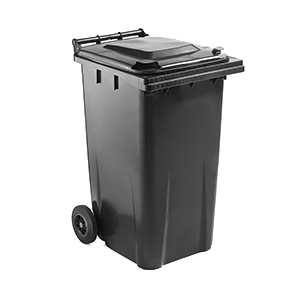Stay Ahead of the Curve, Learn How to Identify Oil Tank Damage
For homeowners relying on oil for heating, the oil tank is a critical component of their home’s infrastructure. Ensuring its proper functioning is paramount for consistent warmth and preventing costly disruptions to your heating system. One crucial aspect of oil tank ownership is understanding how to identify oil tank damage. Early detection of any issues can prevent significant problems, such as leaks, contamination, and costly repairs. This guide will equip you with the knowledge and tools to effectively inspect your oil tank and identify potential problems.
http://oilcare.org.uk/look-after-your-oil/regular-tank-checks/
The Risks of Ignoring Oil Tank Damage
Neglecting to address oil tank damage can have serious consequences:
- Oil Leaks: Leaks can contaminate the surrounding soil and groundwater, posing a significant environmental threat. In addition to environmental damage, oil leaks can also create a fire hazard.
- Heating Disruptions: A damaged tank may leak oil, reducing the available fuel supply and potentially causing heating disruptions during critical periods, such as severe winter weather.
- Contaminated Oil: Damage to the tank can allow contaminants, such as water or debris, to enter the oil supply. This contaminated oil can damage your boiler, leading to costly repairs and reduced heating efficiency.
- Oil Delivery Refusals: Oil delivery drivers are trained to identify potential safety hazards. If they detect damage to your oil tank, they may refuse to deliver oil, leaving you without heat.
Common Causes of Oil Tank Damage
Several factors can contribute to oil tank damage:
- Physical Impact: Impacts from falling debris (branches, stones, etc.), vehicles, or even lawnmowers can cause dents, cracks, and punctures in the tank.
- Age and Wear and Tear: Over time, oil tanks can experience natural wear and tear. This includes the gradual deterioration of materials due to exposure to the elements, such as sunlight, rain, and extreme temperatures.
- Soil Erosion: Shifting soil around the tank base can put stress on the tank’s structure, potentially causing cracks or leaks.
- Corrosion: Corrosion can occur due to exposure to moisture, soil acids, and other environmental factors.

How to identify oil tank damage requires a thorough and systematic inspection. Here’s a guide to help you:
• Visual Inspection
- Top of the Tank: Carefully examine the top of the tank for any signs of impact, such as dents, cracks, or punctures.
- Tank Sides: Inspect the sides of the tank for any signs of cracks, bulges, or discoloration, which could indicate corrosion.
- Tank Bottom: Check the bottom of the tank for any signs of settling, cracking, or corrosion.
- Tank Seams: Pay close attention to the seams where the individual tank panels are joined together. Look for any signs of cracking, splitting, or separation.
- Ventilation Vents (if applicable): If your tank has ventilation vents, inspect them for any signs of blockage or damage.
• Ground Level Inspection:
- Check for Oil Stains: Look for any signs of oil stains on the ground surrounding the tank. This could indicate a leak.
- Inspect for Soil Erosion: Observe the ground around the tank base for any signs of erosion or settling, which could put stress on the tank’s structure.

The Importance of Regular Inspections
Regular oil tank inspections are crucial for early detection of damage.
- Frequency of Inspections: It’s recommended to conduct a visual inspection of your oil tank at least twice a year, ideally before and after the heating season.
- Professional Inspections: Consider scheduling a professional inspection of your oil tank every few years. A qualified technician can conduct a more thorough assessment, including pressure tests and internal inspections, to identify potential problems that may not be visible during a visual inspection.
If you discover any signs of damage during your inspection, it’s crucial to address the issue promptly.
- Minor Damage: Minor damage, such as small dents or minor cracks, may be repairable. Contact a qualified oil tank specialist for an assessment and repair options.
- Significant Damage: If the damage is significant, such as a large crack or a major leak, tank replacement may be necessary.
Taking proactive steps can help prevent oil tank damage:
- Maintain Proper Ground Drainage: Ensure proper drainage around the tank to prevent water accumulation and soil erosion.
- Keep the Area Around the Tank Clear: Remove any debris, such as leaves, branches, and snow, from the area around the tank.
- Protect the Tank from Impact: If possible, position the tank in a location that minimizes the risk of impact from vehicles, falling debris, or lawnmowers.
- Regularly Check for Signs of Damage: Conduct regular visual inspections as outlined in this guide.
https://www.oiltanksplus.co.uk/how-to-prevent-water-contaminating-your-oil-tank/
Peace of Mind
Finally, secure yourself with the knowledge that the replacement work carried out by Oil Tanks Plus has a market-leading 12-year warranty from their Centurion Bunded tank range, backed by an English made product with 25 years of product reliability. Our steel range carries a 10-year warranty and are installed with Brunswick green protective solution as standard. All tank solutions are installed by our carefully selected, expert installers.
Please contact us if you need any more information



















Share This: